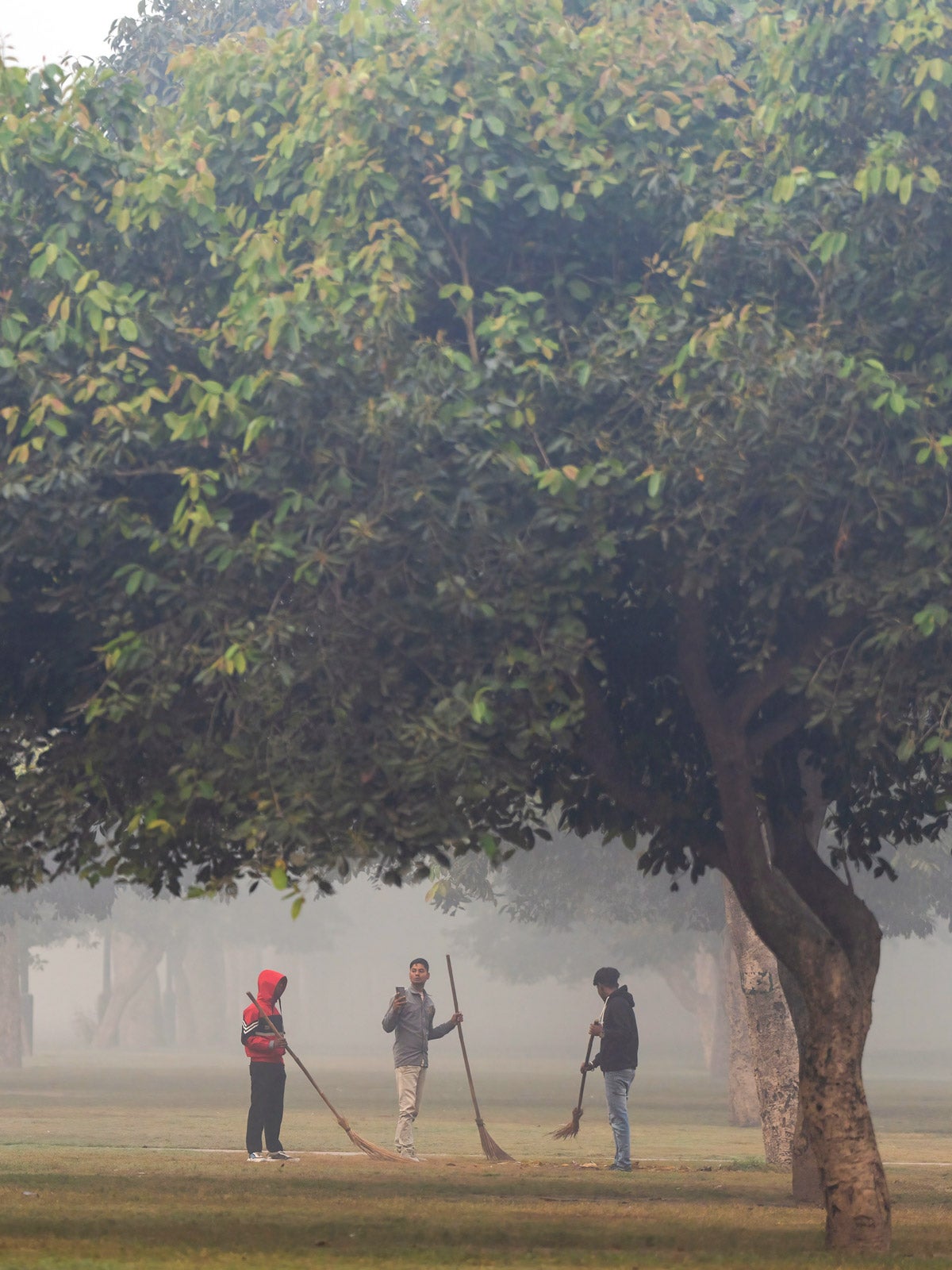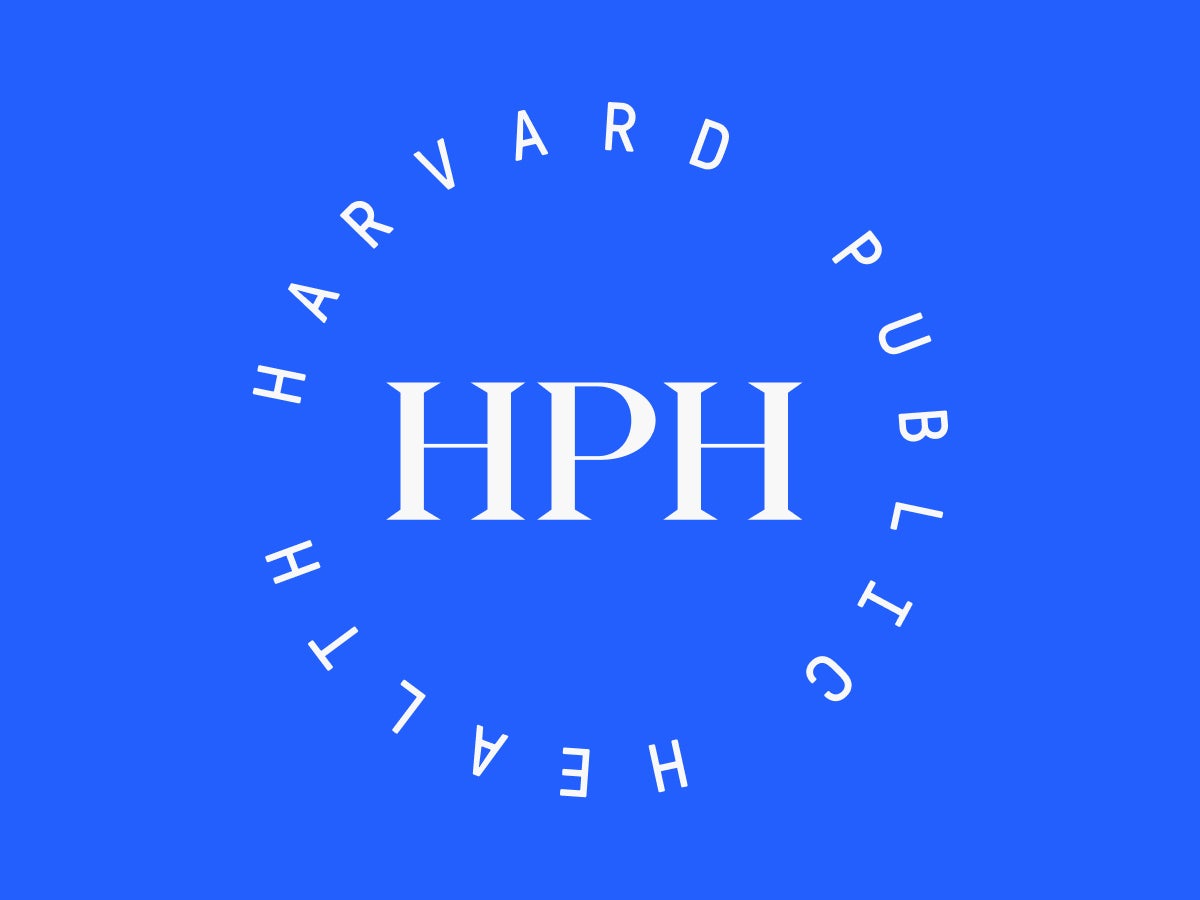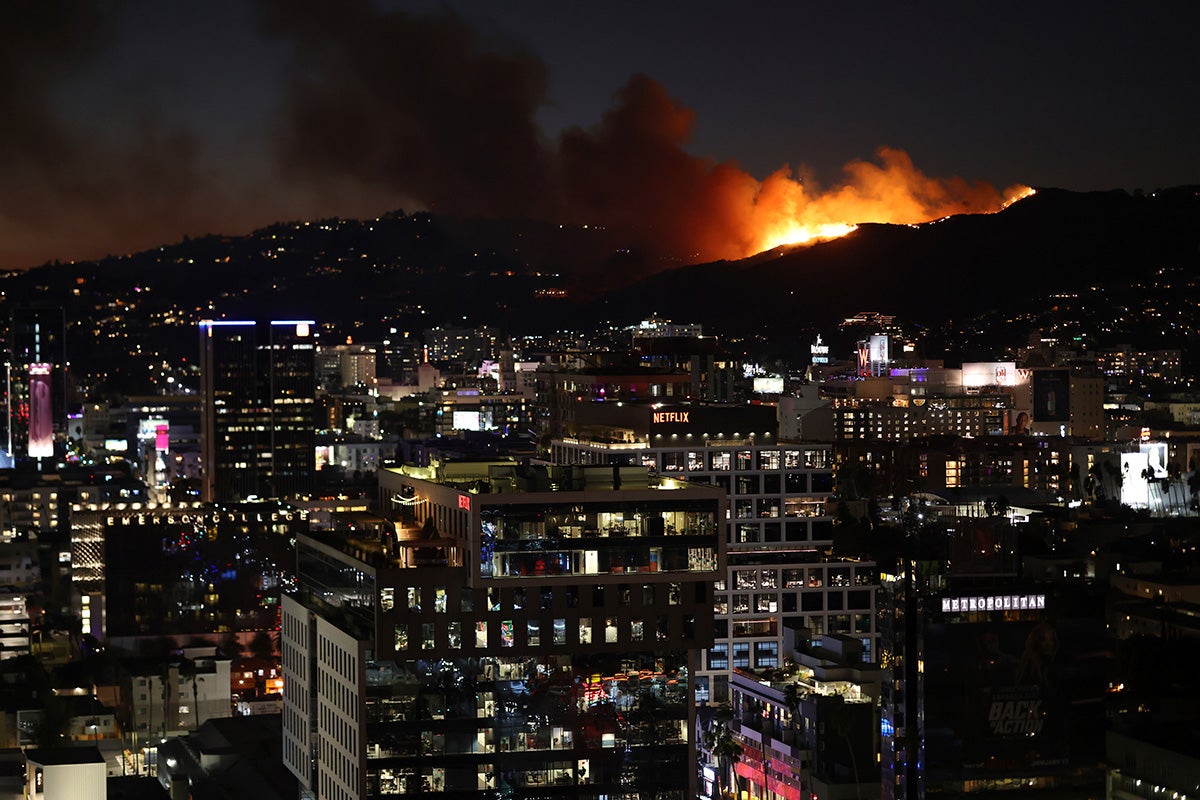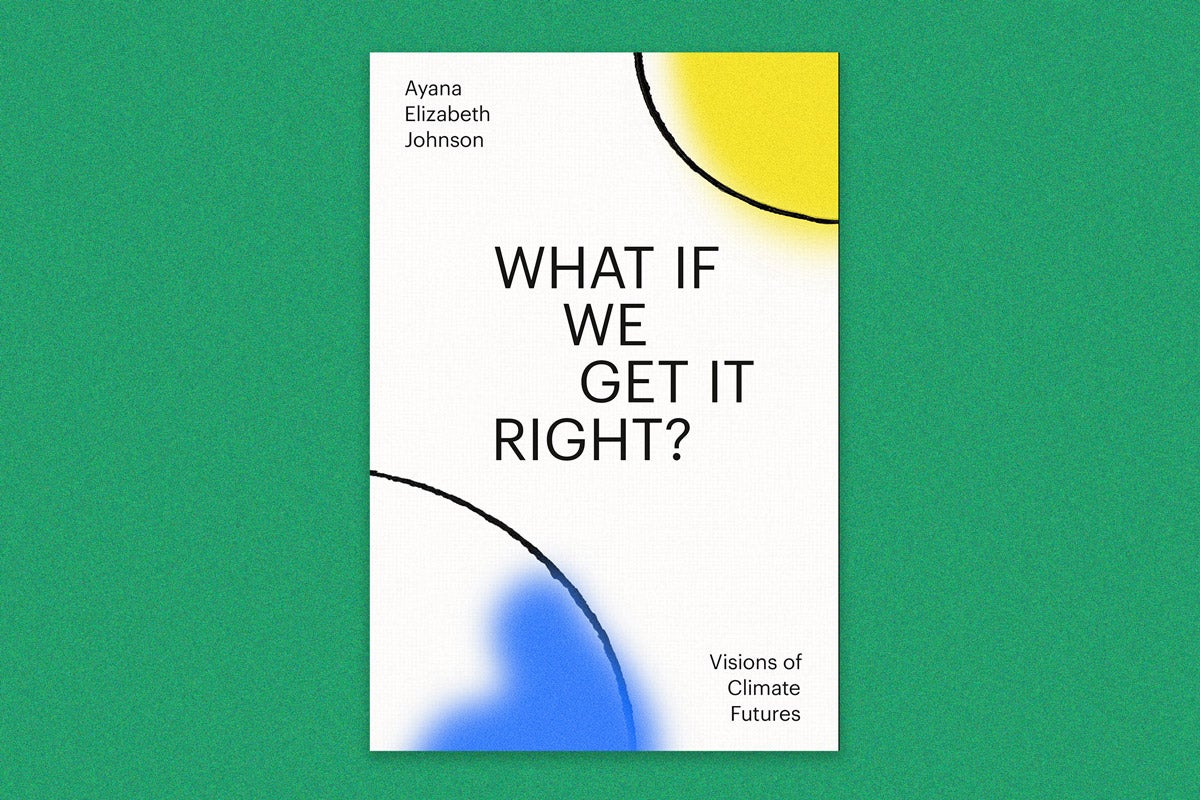
Pedestrians visit a park near India Gate amid smoggy conditions in New Delhi in November 2024. Amarjeet Kumar Singh / SOPA Images /Sipa USA / Sipa via AP Images
People
Mapping every square kilometer of air pollution in India
As happens nearly every fall in Delhi, a densely populated territory in India, authorities recently closed schools and urged residents to stay indoors to escape the eye-stinging, lung-searing air pollution blanketing the capital city. Smog often shrouds the region, but the burning of crop stubble after harvest worsens things on many days.
The poor air quality both frustrates and motivates Siddhartha Mandal, a senior research scientist at the Centre for Chronic Disease Control, an Indian non-governmental organization. Mandal lives in Gurugram, south of Delhi, and during the recent pollution emergency, he found himself hunkered inside with an air purifier.
Mandal is in his eighth year working on GEOHealth India, a research grant from the U.S. National Institutes of Health in its second phase of mapping levels of particulate matter throughout the country, focused on PM 2.5—particles less than 2.5 microns in diameter, too small to see with the human eye.
Mandal’s team shares the grant with researchers at the Harvard T.H. Chan School of Public Health who are providing training to the research team and to other Indian scholars both at Harvard and in India. The team also works to demonstrate pollution’s effect on the rate of cardiovascular disease and diabetes.
Mandal spoke with Felice J. Freyer for Harvard Public Health. The interviews were edited and condensed.
Harvard Public Health: Your research expands understanding of pollution in India. Can you tell more about what you measure, and how?
Siddhartha Mandal: We need estimates of PM 2.5—how much pollution is there at a particular space. Usually that is done through air pollution monitors on the ground. In India we have [just] a few monitors, mostly located in urban areas. So we make air pollution estimates from a statistical model that is calibrated against the ground monitoring observations.
[The model encompasses] the relationship between what is measured by the monitoring station and other variables, like, let’s say, the road density around that monitor, or the temperature at that day. We also have satellite measurements to figure out other features around that monitor. We can get an estimate of how much PM 2.5 is there even in places where there are no monitors.
Sign up for Harvard Public Health
Delivered to your inbox weekly.
HPH: What do you learn from the satellites?
Mandal: If you have a lot of air pollution near the surface, a lot of sunlight would be absorbed in the ground, and the amount of light that gets reflected back would be less. The satellite can capture that, as well as how much greenery there is.
HPH: Have you mapped the entire country?
Mandal: Yes. Every square kilometer. We published it in February—all the predictions for PM 2.5 from January 2008 till December 2020. Currently, we are updating those models for the next four years.
HPH: How are you using this data?
Mandal: We can figure out the air pollution exposure for a particular one-square-kilometer grid and link it with health outcomes. We have used it for linking PM 2.5 exposures with hypertension and diabetes incidence. We have just recently published a paper on ambient air pollution and daily mortality in 10 cities in India, showing that seven percent of daily deaths could be attributed to PM 2.5 exposure.
In another study, we showed that if we reduce PM 2.5 in Delhi from 120 micrograms per meter cubed to 40, which is the Indian air quality standard for annual PM2.5, that is going to reduce hypertension prevalence by 15 percent.
Even if we reduce it 20 micrograms per meter cubed, it would reduce the hypertension prevalence by 5 percent, approximately. That is a lot, given the size of Delhi’s population [almost 34 million].
The usefulness of this is to generate an evidence base to inform policy actions. We are providing the Ministry of Health with the information that we are getting, so that they can create pressure within the government and induce some action.
HPH: How does particulate matter lead to heart disease and diabetes?
Mandal: When you breathe in PM 2.5, it is so small that it enters your bloodstream and starts creating inflammation, a long-term low-grade inflammation. Also there is a direct toxicity from metals which enter your bloodstream.
HPH: Has there been any progress in addressing this problem?
Mandal: Yes. There has been a lot of conversation around air pollution which was not there 10 years back. Delhi didn’t have these ring roads, built to prevent the trucks from entering the city. There has been a stress on improving public transport in most of the cities. We have a lot more subway lines now.
[As for the crop burning], the government is putting in efforts to help farmers transition from the traditional ways of getting rid of crop residues and giving them technology that would help farmers sell it to generate biofuel or remove the crop residue instead of burning.
HPH: What are you working on in the second phase of the grant, which ends in 2026?
Mandal: We are looking at a finer-scale spatial resolution, trying to develop a 200-meter-by-200-meter model in six cities in India. PM 2.5 levels vary, and the finer the resolution, the better the health effects estimates will be.
We are also looking at other outcomes—pregnancy outcomes and adolescent health.
HPH: As someone who studies air pollution, how do you feel each year when the smog emergency occurs?
Mandal: It’s frustrating. I’ve seen a lot of people here complaining of respiratory issues. Most people are not aware that air pollution causes long-term damage to the heart or its arteries. People don’t realize what’s happening to the brain, to the heart, to the kidneys.
It’s not a winter problem; it’s not a one- or two-month problem. It’s a yearlong problem, and people still don’t realize that. If you’re not concerned about it at any other time other than these two, three months, that’s not going to solve the problem.


